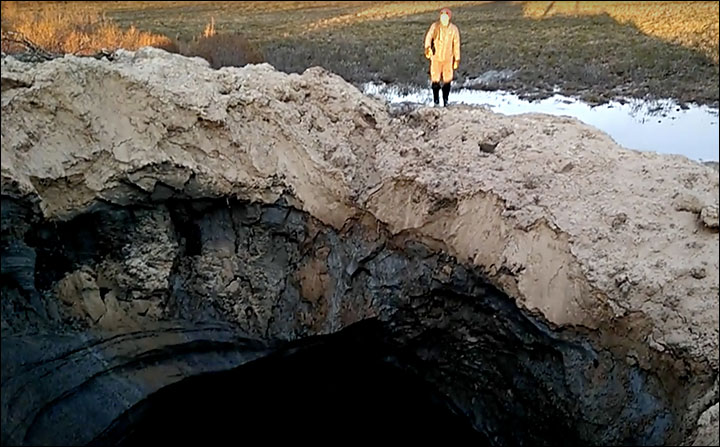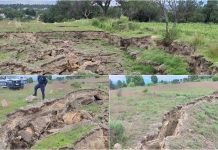Two new craters formed on Yamal peninsula in 2017, with the latest exploding on 28 June with the eruption picked up by new seismic sensors.
Local reindeer herder witnessed the tundra explosion that led to birth of new hole in river. The new crater in Yerkuta is reported to be 8 meters in diameters and about 20 meters deep.

The formation of both craters involved an explosion followed by fire ad are evidence of the eruption of methane gas pockets under the Yamal surface.
The video below shows two new craters, with the latest of them (second part of the video) forming on 28 June 2017:
People in Seyakha village heard a ‘loud explosion-like bang’ then saw a fire and clouds of black smoke.

A herder reports the formation of the newest crater: “On 28 June ‘there was short but mighty fire’ around 10.25 am. It was registered by seismic sensors as being timed around 35 minutes later. It happened some 35 to 40 kilometres north-west of Seyakha. There was a hill not far from the camp, and it exploded. There were fire, smoke and huge chunks of soil ‘flying out’ of the epicentre. The hill has vanished.”

On 28 June at 11.00.13 am local time, the seismic network on Yamal recorded a seismic event, probably associated with the release of gas. The oscillations are registered by two seismic stations located in Sabetta settlement and in the area of the Bovanenkovskoye gas field.

The account of an exploding hill is consistent with the scientific theory that sees the craters as mainly – but not only – formed by exploding pingo mounds.

Helicopter reconnaissance of the site shows a crater appearing in a river, so it assumed the ‘hill’ was beside or abutting the river. The crater is some 30-35 kilometres is around 100 km of Russia’s new state-of-the-art Arctic port of Sabetta. It is in an area of crater-shaped lakes.

Scientists say several thousand pingos – dome-shaped mounds over a core of ice – , many filled with gas, could ‘explode’ forming giant craters in this region. At least ten are known to have exploded in Siberia in recent years forming large craters, of which four have been closely examined by scientists.











